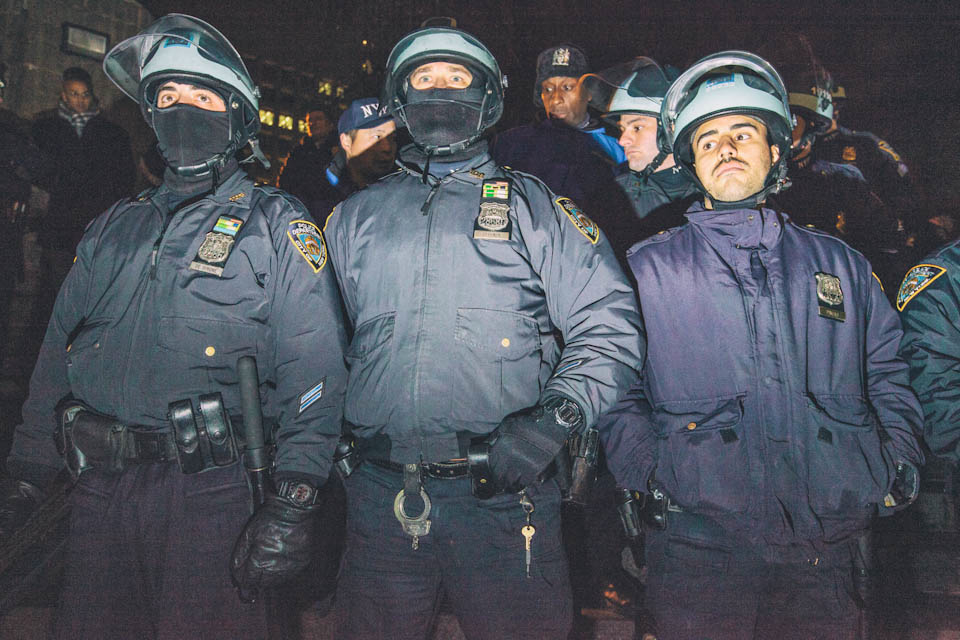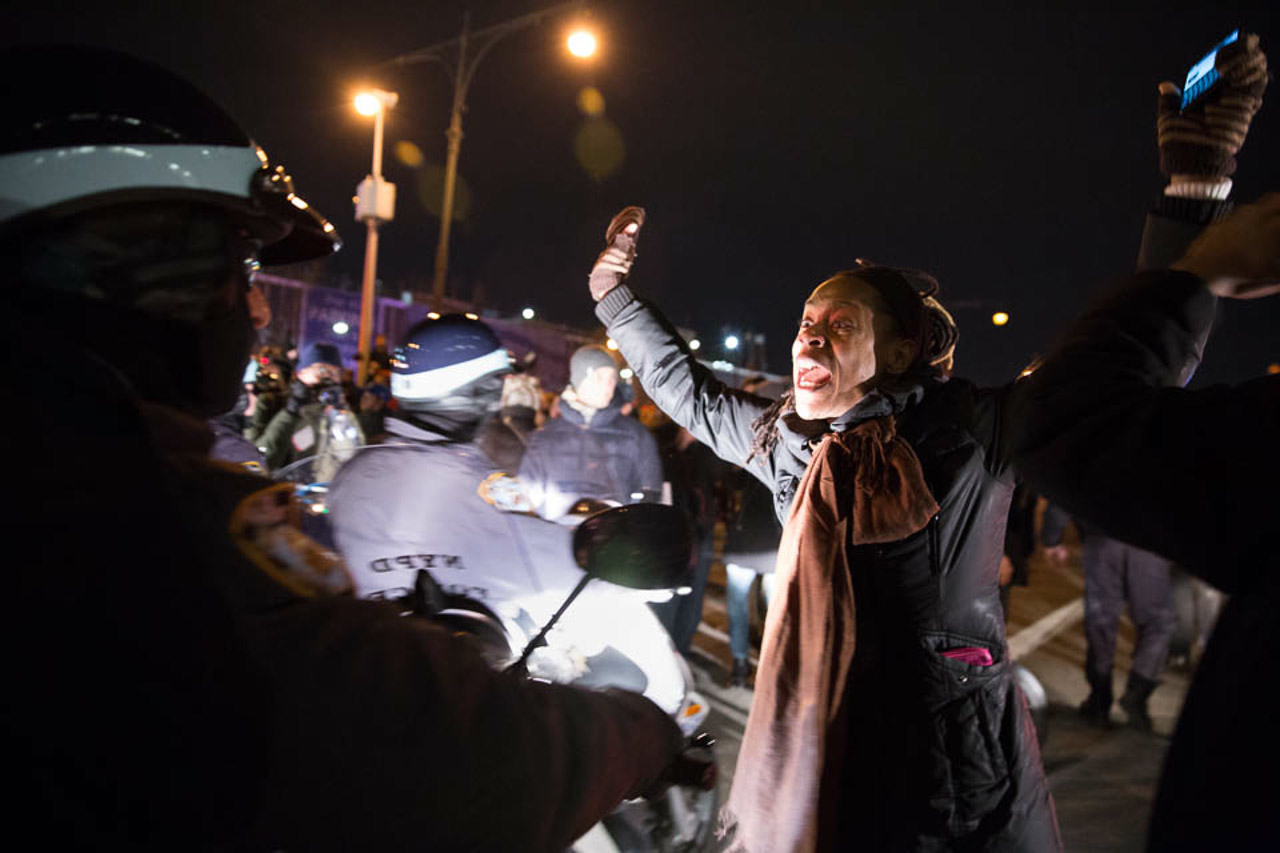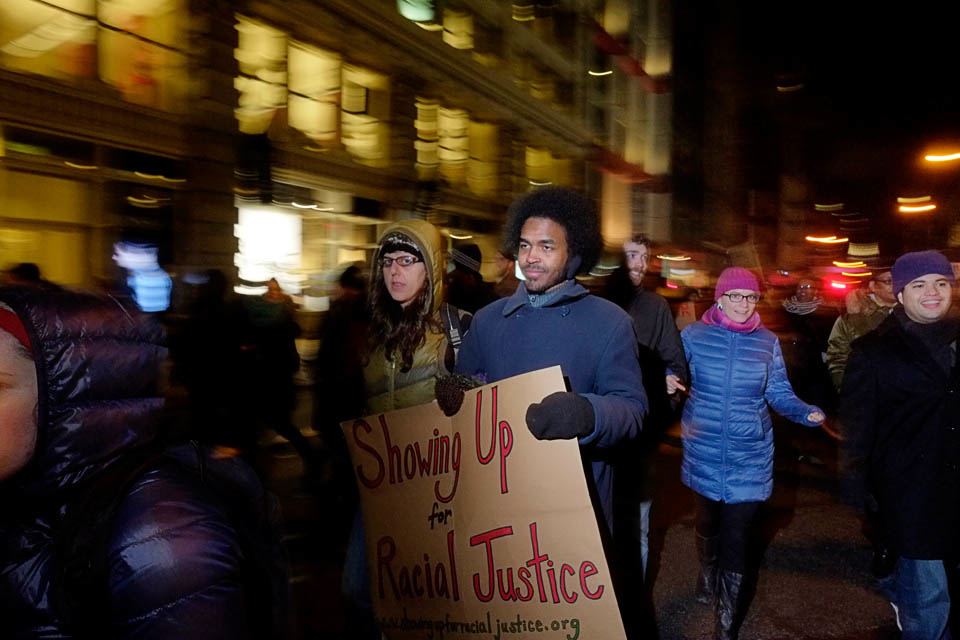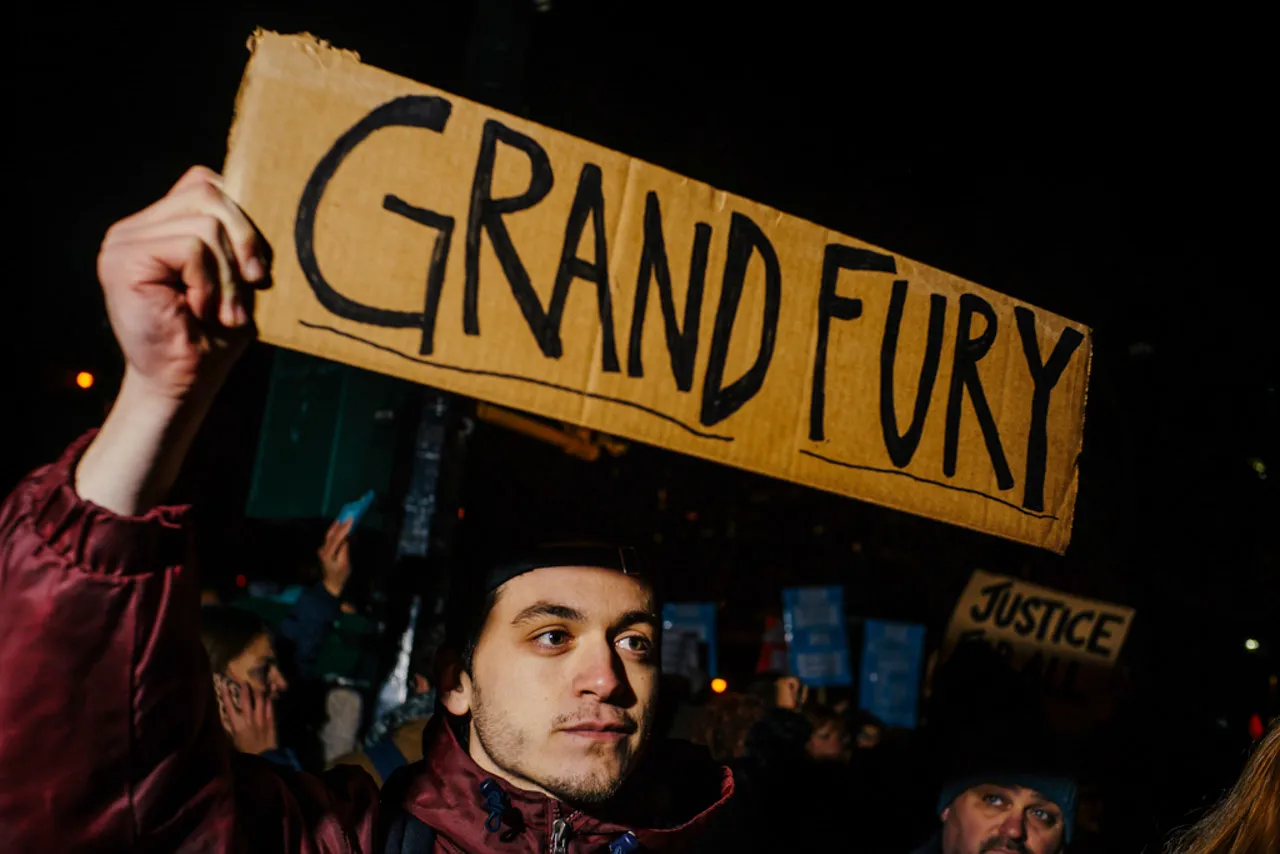As a follow up to the Theorizing the Web 2015 #TtW15 conference hosted in our new space on the Bowery, we present a selection of photography-focused presentations from the conference authored by a diverse set of academics, activists, artists, and journalists.
Amid the social and political upheavals of recent years, the smartphone camera has gained a particular kind of social agency. During the Arab Spring protests of 2011, commentators in academia and the mainstream media argued that these devices offered a new form of social organization that presaged democratic mobilization and governance. Elsewhere, encamped in public parks, Occupy Wall Street protesters documented their movement and its politics, as well as key moments of conflict between the police and protesters.
However, as time passed and revelations about the U.S. government’s surveillance across mobile devices were revealed, popular commentary began to frame the smartphone as having compromised potential. And as protests have rolled from Ferguson to Baltimore in recent months, there is a renewed vigor behind the idea that the smartphone—by allowing individuals to document previously unseen realities—has created a new politics of visibility.
The shifting celebrations of the smartphone as a completely emancipatory device reveal a key problem often encountered in the analysis of communication devices: they are either seen as overdetermining forces or beacons of possibility. In order to escape this division of techno-optimism and pessimism, it is more useful to consider the smartphone as a tool of contemporary social relations.
In this brief space, I’d like to explore the ways the smartphone camera’s possible social and cultural agency emerge from the relationship between technology and the broader cultural contexts in which smartphone images and videos exist. By exploring the relationship between the technological and social conditions that surround the smartphone, we may recover the device’s potential power.

Material conditions: Image Production and Distribution
The smartphone’s image manipulation and production capabilities, as well as its access to online distribution networks, omit and obscure highly technical processes in a simple interface. Like lens focal length and traditional photography, the devices’ specific technical capabilities offer a means for producing images that not are not only acts of photography, but may circulate across the political and cultural spheres as communication objects.
The technical dimensions of the smartphone vary radically from traditional cameras. For instance, since lenses are condensed into a far smaller space, the physics of a smartphone camera’s focal length keep it from achieving wide-ranging zoom and panorama while also limiting the device’s ability to achieve a granular depth of field.1 The materiality and make-up of the lens has offered researchers, designers, and manufacturers opportunities to improve the quality of smartphone cameras, but due to the physics of the compressed lens, and to a lesser extent, the reduced light-sensing capabilities of the light chip, there will always be limits to the types of images a smartphone camera can capture.2
Problems with overexposure, auto-focus distortion, and shadow, for example, are common areas that designers and manufacturers respond to in order to improve the cameras. Still, the manufacturing process of smartphones offers strict parameters, as issues of production scale, material cost, and market estimations in many cases prevent the development of technological advancements that outpace desired affordability.3
The limited capabilities of the smartphone are positive as they grant a certain range of aesthetics and forms to images. Apps like Hipstamatic and Instagram also obscure complex data translation and image manipulation processes beneath a simple interface that allows the individual to produce powerful images without understanding the technical intricacies.
The agency of the smartphone camera lies not just in its ability to easily produce an image, but also to grant the power of image distribution to the individual user. The smartphone puts the political, economic, and cultural forces shaping the Internet within the user’s control. The shifting of digital activity away from desktops and onto mobile devices means individuals can mobilize their connections as nodes amid a vast network. And, by being realized in code and shared across broad commercial platforms such as YouTube, Vimeo, Flickr, and Twitter, these images can become a part of news reports, giving users the ability to tap into journalism’s power to set agendas and amplify circulation.

Image capture as a cultural practice: Ubiquity and granularity
There is a long history to the relationship between images and social protest, as succinctly documented in the scholarship of Kevin Deluca, among many others.4 As Deluca notes, by utilizing the affective character of photography to document protest events, activists engage with cultural politics that assume images have the ability to reveal an unseen balance of power.
Tapping into these cultural politics, though, requires an understanding of photography’s logistics. The structure of distribution networks and the technical restrictions of mobile image production provide material limits, but certain social limits also emerge from the smartphone’s broad uptake as a consumer device.
With the mobility and lowered cost that comes from attaching a camera to a mobile phone, ubiquity—i.e. the presence of cameras and capable camera users in a wide range of situations—becomes a persistent social condition.
By understanding ubiquity and granularity–i.e. the volume of images that record detailed moments of reality–as specific phenomena related to smartphones, we can see how the device has the potential to reorder power relations. As an example of these as strategic concerns, the U.S. Department of Defense has released reports analyzing the ubiquity of cameras, often noting that military groups must take into account that their movements, images, and words can now be easily documented and shared.5
Even in the more mundane routines of daily journalism, camera ubiquity must be managed and strategically engaged, as captured in the words of Pulitzer Prize-winning photographer Stanley Forman:
The problem was and is that as a long-time news photographer I cannot beat the competition anymore. The competition is anyone who has a cell phone, smart phone, or any other portable device that takes stills of video. The other problem is that practically everyone has the technology and knows how to use it.6
Underlying Forman’s quote is an understanding that the act of capturing an image has become so easy that it is divorced from the technical workings of the device itself.
Inherent in the smartphone camera’s ubiquity and granularity is the understanding that it can capture images that matter.
This fits within a cultural history of amateur images that provide perspectives not often present in broader culture and important because of the events they capture. Comparing digital images of Saddam Hussein’s execution with the Zapruder film recordings of President Kennedy’s assassination, Michael Agger writes, “they both testify to the power of first-person witnessing, and how a digital copy of that witnessing can upend neat narratives and certainties. We'll see the best of things, we'll see the worst of things, we'll see everything.”
Stuart Allen carries this notion of witnessing further, noting that the aggregate seeing of things—or at least, potentially significant events and moments—allows for the creation of a digitally accessible record that can lend documentary weight to any individual or group seeking to challenge notions of “what really happened.”7
As more cameras exist in more places, a better understanding of social reality may be discerned from the aggregate circulation, archiving, and ordering of the images and videos these cameras produce, much like what is being done by Lev Manovich and the folks at the Software Studies Lab.
But it is also worth paying attention to the ways these images work as individual expressions of power. With smartphones acting as mediators in small-scale interactions, they are able to record and reveal the details of these interactions in ways that have effects on the performance of power. Making sense of the differences in access to power between police and protester, Caleb Crain writes in the New Yorker, “Smart phones have cameras, and almost everyone has a smart phone. A court is therefore less likely to be ignorant of what actually occurred between the policeman and me. The policeman and I may have videotaped it. Bystanders might have, too.”
Crain’s statement is significant because, as a form of journalistic analysis appearing in a popular forum, it reveals a rationality that takes it as a given that the smartphone camera is important not just because it is everywhere, but by being everywhere, it can record in detail. When these details appear as legitimate documents amid institutional practices, such as journalism, politics, and law, we can begin to see their potential to reconfigure relations of power.
This reconfiguring has been experimented with and made effective in a wide variety of projects. Whether it is the overt challenging of power through sousveillance projects, the strategic coordination of large-scale activity as in the Occupy movement, or the expression of solidarity as in #BlackLivesMatter, the smartphone grants access to myriad technical processes and hides them beneath the image or video as an easily shared representation, just when such representations are needed most.

The limits of smartphone power
It is important to note that the practices of image capture outlined above also limit their power. In the case of Eric Garner, the Staten Island man whose death at the hand of police officers was recorded on the phone of a passing witness, the ensuing video did not constitute enough evidence to lead to an indictment for the officer involved.
During the Occupy Wall Street and the Arab Spring movements, when the popular press lauded the power of digital images to shift politics on an unforeseen scale, traditional institutions moved to constrain the effects of these movements. From a Foucaultian perspective, these images and videos broach the limits of power as embodied in dispersed audiences and individual actors. Other rules of meaning production determine the power they bear, such as the rules of evidence in a legal preceding.
Still, by masking complex image production and distribution practices, the smartphone has allowed for granular forms of image capture to gain cultural power, for, as Daryn Cambridge has counseled activists, “camera phone videos also enable us to see that which was often intended to remain veiled or hidden.” By looking at the smartphone camera as an apparatus embedded in broader relations of power, observers may begin to understand visual truth as a political act. Smartphones, then, fit into a genealogy of photographic technologies that allow individuals to engage in forms of social documentation and representation that challenges relations of power by expanding the intelligibility of certain events, phenomena, or issues.8
In keeping with Jack Bratich’s admonition that devices open up possibilities for subjugation as well as emancipation, I’d like to conclude by noting that the valences of power move both ways through the smartphone, as the technology also allows surveillance practices like geo-location and IP tracking to further monitor individuals.9
The power that moves through the smart phone can be instrumentally conceptualized and strategically deployed, accounted for, and resisted. To that end, if scholars, activists, and commentators are to contend with the political potential of devices such as the smartphone camera, then it is imperative to account for the simultaneous processes embodied in its mechanics alongside the cultural and social conditions these devices are often celebrated for disrupting.
Brian Creech is an assistant professor of journalism at Temple University in Philadelphia, PA. He specializes in multimedia storytelling, critical journalism studies, and the relationship between new technologies and the relations of power. Follow Brian on Twitter @bcreech.




